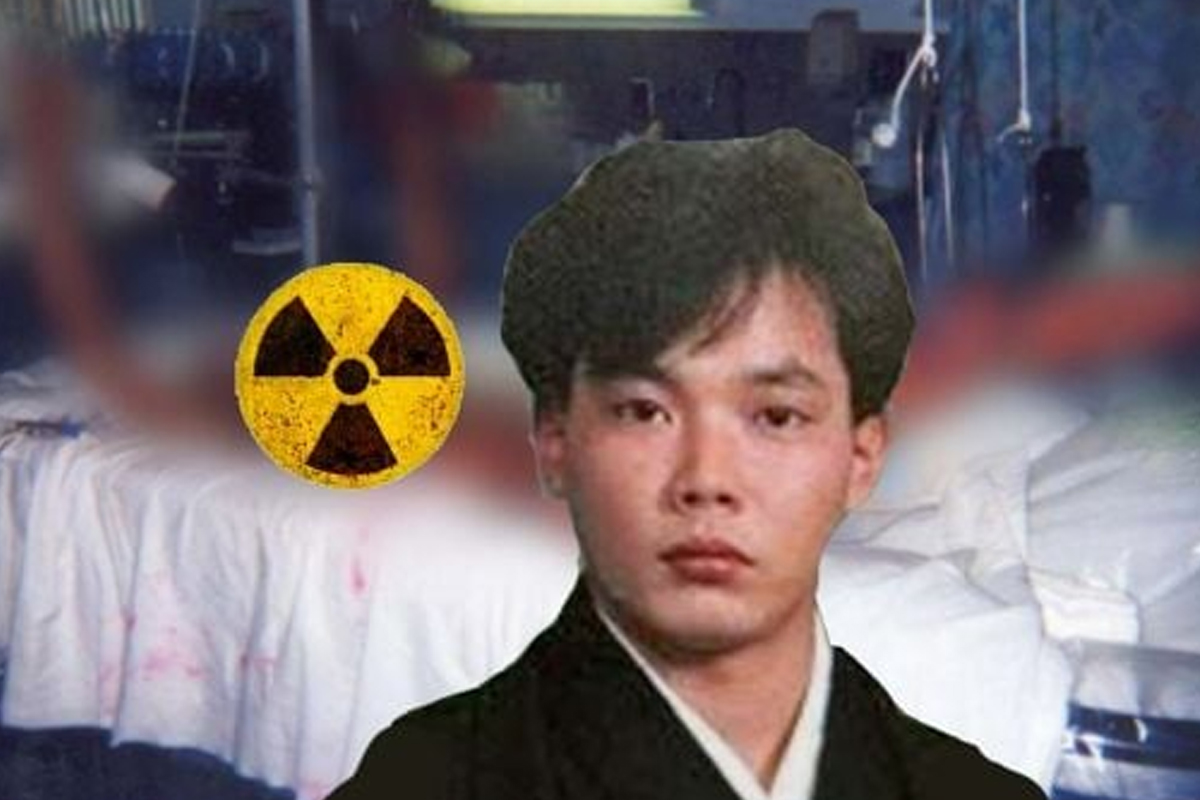The agonising death of Hisashi Ouchi, a Japanese technician, remains one of history’s most harrowing cases of radiation poisoning, highlighting the devastating consequences of a nuclear accident.
This is his story.
Who Was Hisashi Ouchi?
Born in Japan on 1st March 1965, Hisashi Ouchi developed a keen interest in science and technology from a young age. Growing up in a modest household, he was known for his curiosity and dedication—qualities that eventually led him to a career in nuclear technology.
As a technician at JCO Co., Ltd., a nuclear fuel processing company, Ouchi found his work both challenging and fulfilling. His role demanded precision and a deep understanding of nuclear science.
Despite the technical nature of his work, colleagues described Hisashi as warm and approachable, noting his ability to put people at ease and his tendency to share stories and laughter during breaks, according to a report by thedplg.
The Criticality Accident At Tokaimura
Hisashi’s life was tragically altered on 30th September 1999, by a criticality accident at the JCO nuclear fuel processing plant in Tokaimura. This event would change his life irrevocably and leave a lasting impact on the global nuclear industry.
On 30th September 1999, he was part of a three-man team preparing uranium for nuclear fuel. However, Ouchi, his colleague Masato Shinohara, and supervisor Yutaka Yokokawa added 16 kg of uranium to a processor—a quantity far exceeding the 2.4kg safety limit.
Context/Details:
On September 30, 1999, the Tokaimura nuclear power plant in Japan experienced a criticality accident, marking one of the most severe nuclear accidents in history.
Hisashi Ouchi, a 35-year-old technician working at the plant, along with two colleagues, was… pic.twitter.com/dwVR08LgIB
— BoreCure (@CureBore) February 7, 2024
The three men recalled witnessing a sudden blue flash just before radiation alarms began to sound, and they immediately became ill. Ouchi, positioned directly over the processing container then, was exposed to 17,000 millisieverts (mSv) of radiation, the highest amount ever recorded in a single instance for any individual.
To put this in perspective, the annual safety limit for radiation workers is 20 mSv, and 5,000 mSv is considered a fatal dose. Shinohara absorbed 10,000 mSv, while Yokokawa, who was at a desk some distance away, received an estimated 3,000 mSv. All three men were immediately taken to the hospital.
The Radiation’s Devastating Effects
Despite initially appearing healthy, Ouchi’s condition steadily worsened over a harrowing 83-day period as the radiation exposure prevented his body from replacing dying cells. One of the first visible effects was the shedding of patches of his skin while receiving medical treatment.
He then developed breathing difficulties as fluid accumulated in his lungs, eventually requiring a ventilator. The cells in his digestive system responsible for absorbing food and medication also began to die.
Hisashi Ouchi, a Japanese nuclear fuel plant worker, suffered an 83-day ordeal after being exposed to critical levels of radiation in 1999. Ouchi absorbed 17 sieverts of radiation, the highest level ever recorded for a human being.
Despite experiencing severe radiation burns,… pic.twitter.com/mPPItYG4tH
— Ismael K Xavier (@ismael_3Js) March 13, 2024
This resulted in extreme gastrointestinal pain and discomfort, along with the excretion of three litres of diarrhoea daily. The damage to his digestive system also caused internal bleeding, requiring medics to administer up to ten blood transfusions per day to sustain his life.
The Medical Response
His skin loss continued to worsen, eventually causing him to leak litres of bodily fluids through his exposed flesh. Medical professionals attempted various treatments, including skin grafts and stem cell transplants, but none were successful.
Even powerful painkillers failed to provide significant relief. One alarming development was the loss of his eyelids, which left his eyes incredibly dry and painful. Local reports from that time indicated that he began ‘crying blood’ and pleaded with doctors to cease treatment.
His heart, labouring to sustain his failing body, finally gave out on his 59th day in the hospital, but he was resuscitated three times at his family’s request.
The End Of His Ordeal
His suffering finally ended on 21st December, his 83rd day in the hospital, when he died from multiple organ failure. A few months later, in April 2000, Shinohara, his fellow technician, also died at the age of 40 from multiple organ failure.
Yokokawa was also hospitalised but released after three months with only minor radiation sickness. According to a report by DailyMail, the incident prompted new legislation in Japan designed to strengthen operational safety requirements within the nuclear energy industry.






